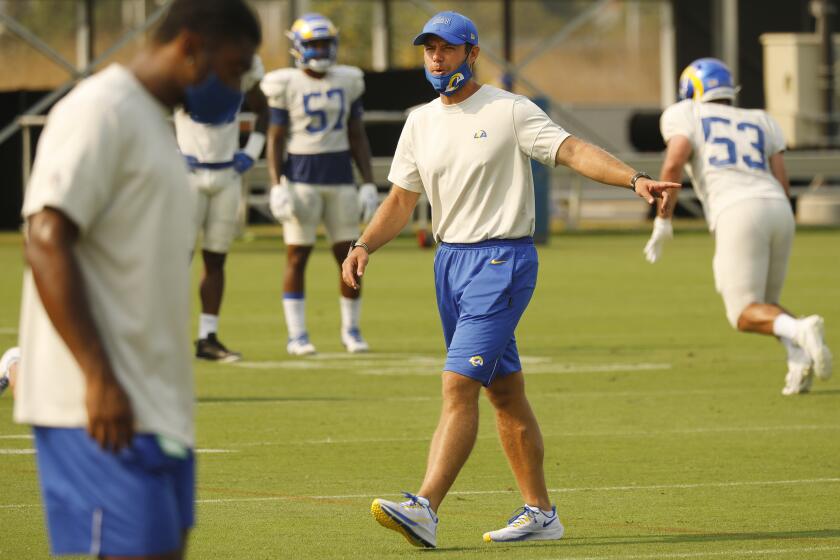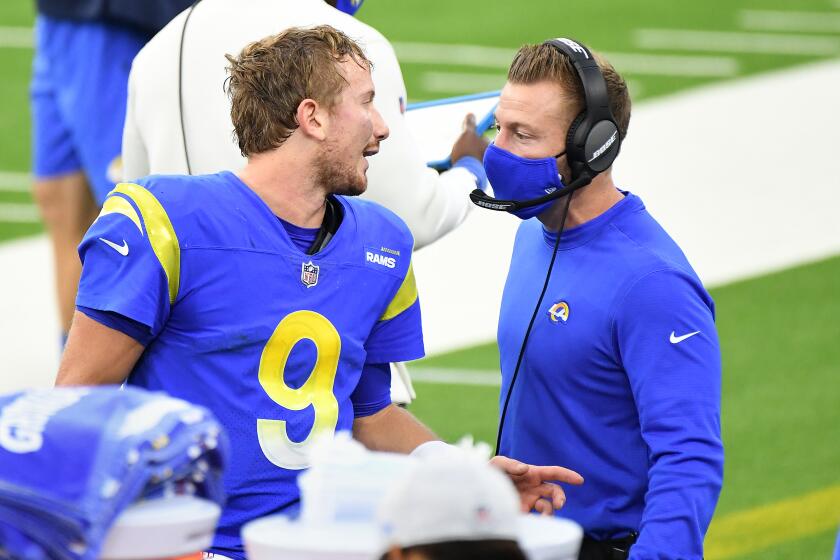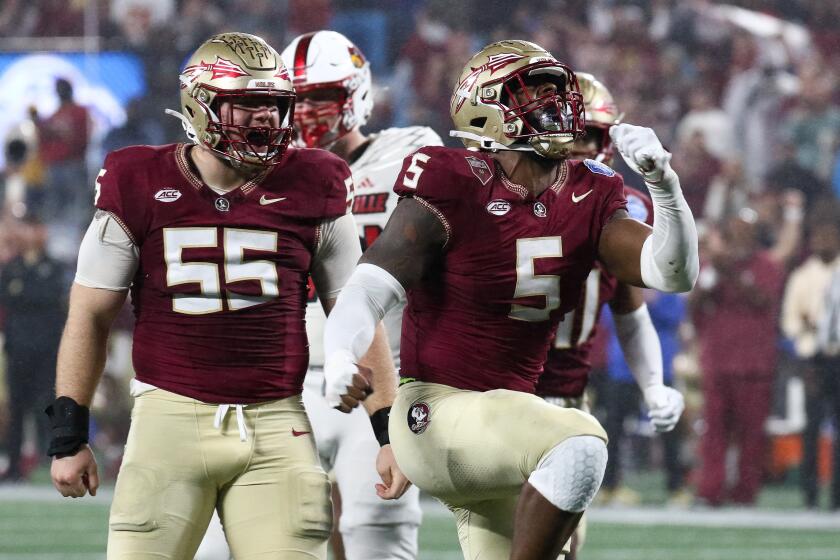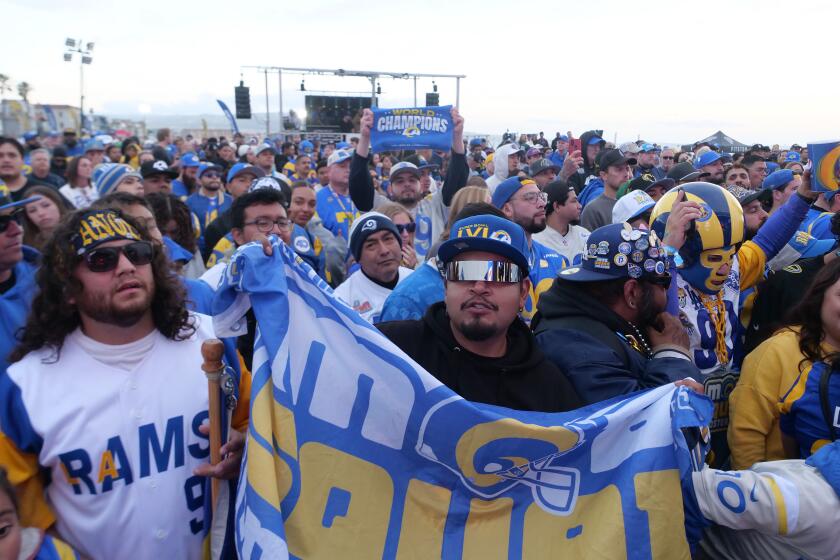Why the Rams red zone offense has been failing
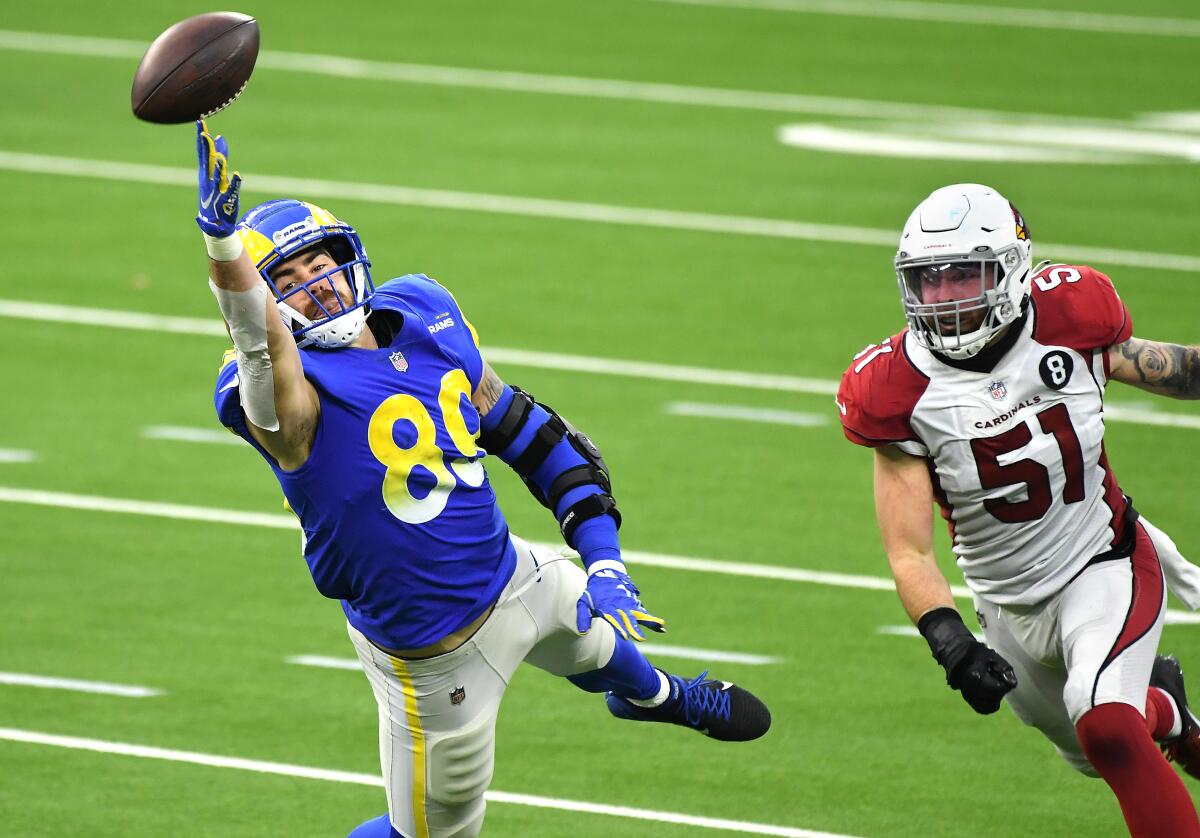
They face questions at quarterback, are up against a tough yet familiar opponent Saturday to start the playoffs, and will do so in chilly conditions.
But amid all the obstacles, one thing Rams coach Sean McVay thinks his team can control is correcting an inability to score touchdowns once in the red zone. If they don’t, their NFC wild-card matchup against the Seattle Seahawks might be their last game of the season.
“There’s no excuses,” McVay said. “We have to be better.”
The NFL measures red-zone efficiency by the number of times a team scores touchdowns inside the opposing 20-yard line divided by the number of times a team reaches that area. In the last two games — a loss at Seattle and a win against the Arizona Cardinals — the Rams’ efficiency stands at 0%. Their opponents posted a 58.5% red-zone efficiency.
In six red-zone trips, the Rams fumbled twice (recovering one), committed a turnover on downs and kicked four field goals. It’s a trend McVay knows isn’t sustainable.
“If we expect to win some of these games going forward … we have to finish those drives in the red area,” McVay said. ”That’s going to be a big focal point — a point of emphasis — and I trust that we’ll get it fixed.
“There’s going to be a huge sense of urgency.”
Defensive coordinator Brandon Staley has coached the Rams’ defense into the No. 1 unit in the NFL, and teams seeking new head coaches have taken notice.
The Rams rank 19th in the league with a 57.9% red-zone efficiency, a far cry from last season when they ranked fifth at 64.4%. The last two weeks are of particular concern because they laid bare the multiple ways the Rams struggled in close-yardage situations.
On 10 of the 29 red-zone plays in that time frame, defenses generated a noticeably stronger, more forceful push at the point of attack against the Rams’ offensive line, according to a Times review of film.
The most glaring example happened in the third quarter against Seattle, when the Rams failed to score a touchdown from near the goal line in four tries.
On first down, defensive end Carlos Dunlap bull-rushed tight end Johnny Mundt so powerfully that it lifted him off his feet. Linebacker Jordyn Brooks also beat a block by tight end Tyler Higbee, tackling running back Malcolm Brown for a two-yard loss.
Seattle defenders trotted off the field in celebration after stuffing the Rams on fourth and goal. McVay credited the Seahawks for playing with a heavy-personnel set that loaded the line of scrimmage.
Still, players regretted not capitalizing on the field position.
“To be honest, we just didn’t get the job done,” Brown said. “Obviously we want to score there. If we’re that close, we want to get in the end zone and get six points out of that deal.”
Ball security and penalties have been issues, too. Quarterback Jared Goff, in that goal-line series against Seattle, fumbled on a sneak attempt at the one-yard line, but the Rams recovered it.
Against the Cardinals from the two-yard line, running back Cam Akers darted to the left side, but the defense stood him up in a pile. With his legs still churning and linebacker De’Vondre Campbell’s arm around his neck area, Akers tried to extend the ball for a score. Linebacker Isaiah Simmons swiped at the ball, poking it out. It hit the ground and the Cardinals recovered it in the end zone. Akers called his action “immature.”
“It’s something that we preach … ‘Don’t reach the ball over the goal line unless it’s a do-or-die situation,’ ” Akers said. “It’s 100% on me. Something that can’t happen, something that won’t happen. It’s something I can learn from.”
Breaking down the notable numbers behind the Rams’ 18-7 victory over the Arizona Cardinals at SoFi Stadium on Sunday.
The Rams entered the red zone four times against the Cardinals, but committed three pre-snap penalties. That yardage proved critical on two drives, as the Rams settled for field goals. Quarterback John Wolford, the starter in place of Goff, who injured his thumb against Seattle, said the team “can’t have” those errors.
Moving the ball in the red zone is more difficult than elsewhere. The space condenses, allowing defenses to account for less vertical territory. Throwing windows are tighter, which makes precision and accuracy more important, McVay said.
Against the Cardinals, Wolford misfired and threw a pass high to Everett in the first quarter. The tight end dropped a potential touchdown pass near the back pylon in the fourth quarter. McVay said with an added attention in practice, along with better play-calling on his part, he’s confident the mishaps will decrease.
“It’s winning those individual matchups and being able to activate the right plays that we can execute and not beating ourselves,” McVay said.
Akers agreed.
“It’s a mind-set,” he said. “I feel like when it comes to just football in general, but especially on the goal line, it’s ‘I’m lining up — 11 on 11 — and I’m not going to let you beat me.’ If we take that mind-set, I feel like we’ll be more successful.”
More to Read
Go beyond the scoreboard
Get the latest on L.A.'s teams in the daily Sports Report newsletter.
You may occasionally receive promotional content from the Los Angeles Times.
